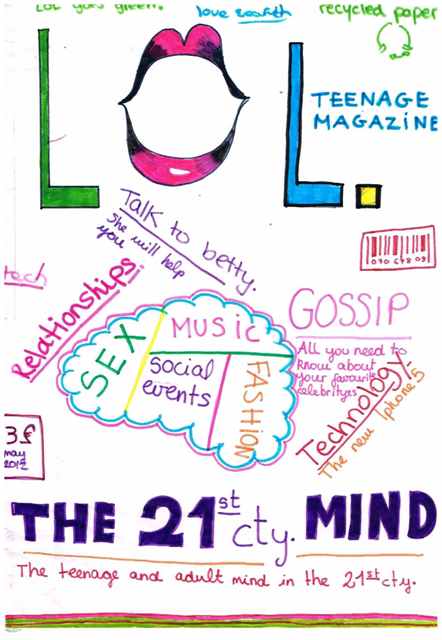
The Curious Case of the Black Dog: International Youth Day 2014
On 17 December 1999, in its resolution 54/120 the United Nations General Assembly endorsed the recommendation made by the World Conference of Ministers Responsible for Youth (Lisbon, 8-12 August 1998) that 12th August be declared International Youth Day (http://www.un.org/en/events/youthday/)
The theme of International Youth Day 2014 is “Youth and Mental Health”. According to the United Nations: “the 2014 observance of International Youth Day will raise awareness on this important topic, as well as highlight the experiences of brave, young individuals who have chosen to speak out about these issues with the objective of overcoming stigma and discrimination to ensure that young people with mental health conditions can lead full and healthy lives free from isolation and unnecessary shame, and openly seek the services and support they need”.
Indeed, waking up today to the news of the untimely death, and speculated suicide, of Robin Williams, the globally famous American actor and Comedian should only serve to highlight the perils of mental health’s extreme consequences and unabashed reach. His publicist confirmed he was “battling severe depression”.
Mental Health is borderless in its reach; it transcends age groups, status groups, career groups, countries, tribes and religions. It reached into the depths of the funniest man on the planet and created a core of sadness in a seemingly happy shell.
It is a giant killer. So why do so few people talk about it?
How does Mental Health affect youth?
Nearly 80,000 young people (aged 5-16 years old) suffer from depression (Young Minds, 2014, www.youngminds.org.uk) and between the 1980s and 2000s, the number of young people with depression has nearly doubled (Nuffield Foundation (2013) Social trends and mental health: introducing the main findings. London: Nuffield Foundation)
The figures below are based on the finding of the latest ONS Child and Adolescent Mental Health Survey which was published in 2004 and are shown here via the Young Minds website, a charitable organisation set-up to address and support young people’s mental health and wellbeing (www.youngminds.org.uk)
Any figures on the number of children with these disorders are estimates based on the prevalence rates found in this study and demographic data from the 2001 census.
- 9.6% or nearly 850,000 children and young people aged between 5-16 years have a mental disorder
- 7.7% or nearly 340,000 children aged 5-10 years have a mental disorder
- 11.5% or about 510,000 young people aged between 11-16 years have a mental disorder
With the statistics of mental health now firmly on our mind, it would suggest that within every UK school classroom there are at least two children with a mental health disorder.
Why does Mental Health seem so ‘taboo’?
Perhaps one answer lies in the early stages of our perceptions into mental health. Every school we work with does a wonderful job of promoting and involving their students in a charitable appeal and / or project that centres on a human or environmental issue. However, very few it seems, support a mental health charity. Instead causes linked to ‘global development’ such as ‘building a well in Uganda’ will be the centre of attention and more localised appeals tend to draw less attention.
According to a 2012 Guardian article ‘Britain’s Top 1,000 charities ranked by donation. Who raises the most money?’ the top section of this list contains the heavy weights of charity: major health charities, global development groups and animal charities. The first one that touched on mental health was the Samaritans who were beaten heavily by the likes of The British Heart Foundation, Save the Children and I dare you not to feel a pang of guilt at their TV adverts – the Donkey Sanctuary.
By not speaking out on mental health during those informative years, young people will see mental health as ‘different’ to all other human health conditions and vulnerable situations out there in the world. And in turn, should the situation come when they themselves may be afflicted, they will see themselves as ‘different’ too. And this as we know time and time again, can lead to extreme outcomes.
How to bring sensitive topics, such as Mental Health, into the classroom
Bringing mental health into the classroom can be a challenge, not least because you are battling a cause that very few adults even talk about or acknowledge in their lives. But getting students ‘talking’ can be just the step.
One area of our work that has shown demonstrable evidence in getting young people talking about sensitive topics is our Big Launch programme. In this, student teams are tasked with forming their own social enterprise magazine business.
The magazine must focus on a youth target market (therefore the students become the experts!) that encompasses topics such as: diversity, equality, human rights, health, education…. you can tailor it any way you need. These topics are taught within the context of social enterprise business, an exciting subject for many young people, and use case-studies and multi-media information to engage the audience.
We have had some great examples over the years with high impact front covers and fascinating feature articles that bring forth the perspectives of youth into topics such as: gender equality, gay rights, sex education, gangs and even educational advice for combating exam stress!
For more information on the topics talked about above, please visit these wonderful websites:
Or if you are a mental health charity that would like to be showcased in our Big Launch programme, please contact us.


Comments are closed